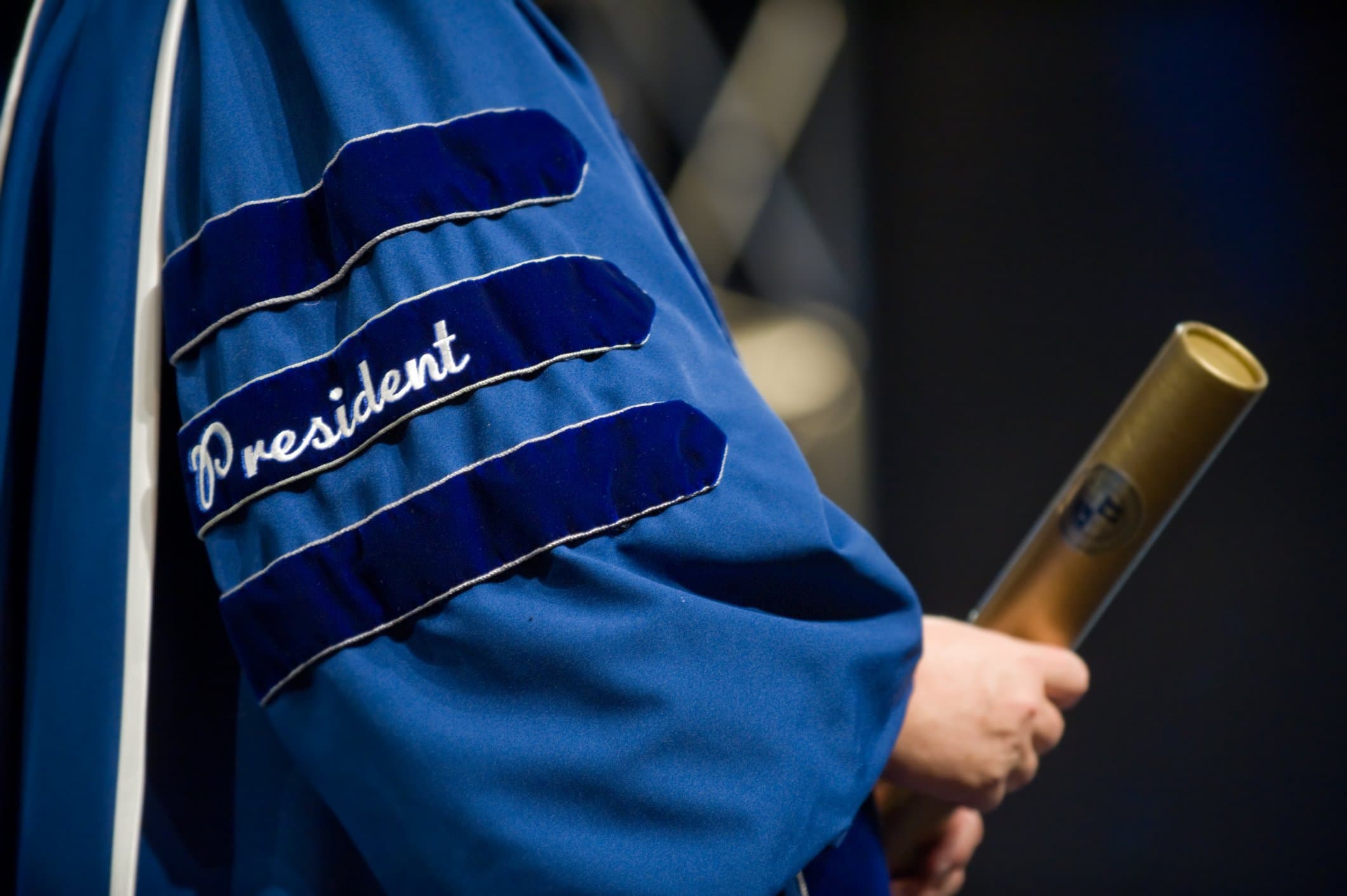
An Inside Look at College and University Presidents’ Perspectives
College and university presidents are dealing with a lot: the challenge to financially rebound from the pandemic, the struggle to hire and retain faculty and staff, the growth of online learning, the ongoing journey to digital transformation, and more. How are presidents handling these issues and how confident are they in their institutions’ futures?
To answer these questions, Inside Higher Ed partnered with Hannover Research to conduct its 13th annual Survey of College and University Presidents. The survey polled nearly 450 presidents of public, private nonprofit and for-profit colleges. Below we briefly summarize some of the survey’s key insights. For a more detailed look at the findings, download your copy of the survey.
Presidents Are Feeling More Financially Stable
Despite the consistent decline in student enrollments and the impending demographic cliff, most presidents are confident in their institution’s financial stability. More than three-quarters of those who responded to the survey said they “somewhat agree” or “strongly agree” that their institution will be financially stable over the next 5-10 years.
Regarding the progress institutions have made since the pandemic, more than half of presidents said that their college is more financially stable now than it was in 2019, and that they expect their finances to continue to improve next year.
Faculty and Staff Concerns Weigh Heavy
While many presidents remain confident regarding their finances, others expressed financial concerns due to the state of higher education employment. This is because recent faculty and staff demands have taken a toll on college and university budgets. In fact, two-thirds of presidents who said their institutions are less financially stable now then they were in 2019 cited an increase in staff salary and benefits as an influencing factor. Roughly 7 out of 10 leaders who predict their institution will be less financially stable next year also cited higher labor costs as part of the problem.
While few presidents are “very” or “extremely” worried about faculty and staff turnover, 36% of respondents were somewhat worried, and 52% blamed burnout as one of the major causes of turnover. Despite this worry, only 36% of college and university presidents said their institution had the resources to meet the mental health needs of faculty and staff.
In-Person Courses Rate Better Than Hybrid and Online Courses
Since the pandemic forced many institutions to modernize their use of technology so they could run hybrid and online courses, many institutions have maximized their technology investment by continuing to offer these types of courses. When asked about the quality of their in-person courses vs. their hybrid or fully online courses, more than two-thirds of presidents said their in-person courses were excellent quality. In contrast, fewer than a third said the same of their hybrid courses.
Are presidents going to shrink their physical campus footprints in favor of more online classes? Probably not. Approximately 50% said they were not at all likely to shrink their physical campus footprint. In fact, only 14% said they were somewhat likely and only 7% were very likely to reduce their size.
Presidents Are Focusing Their Transformation Efforts on Student Success and Retention
Perhaps part of the reason institutions aren’t worried about the upcoming demographic cliff and what it means for enrollments is that presidents across the board are focusing their efforts on student success and retention. When asked where they are concentrating their digital transformation efforts, 83% of presidents said that focusing on student success and leveraging student data for better retention insights were of “high priority” or “essential.”
These highlights represent only a fraction of the information available in Inside Higher Ed and Hanover Research’s 13th annual Survey of College and University Presidents. You can download and read the full survey here.




